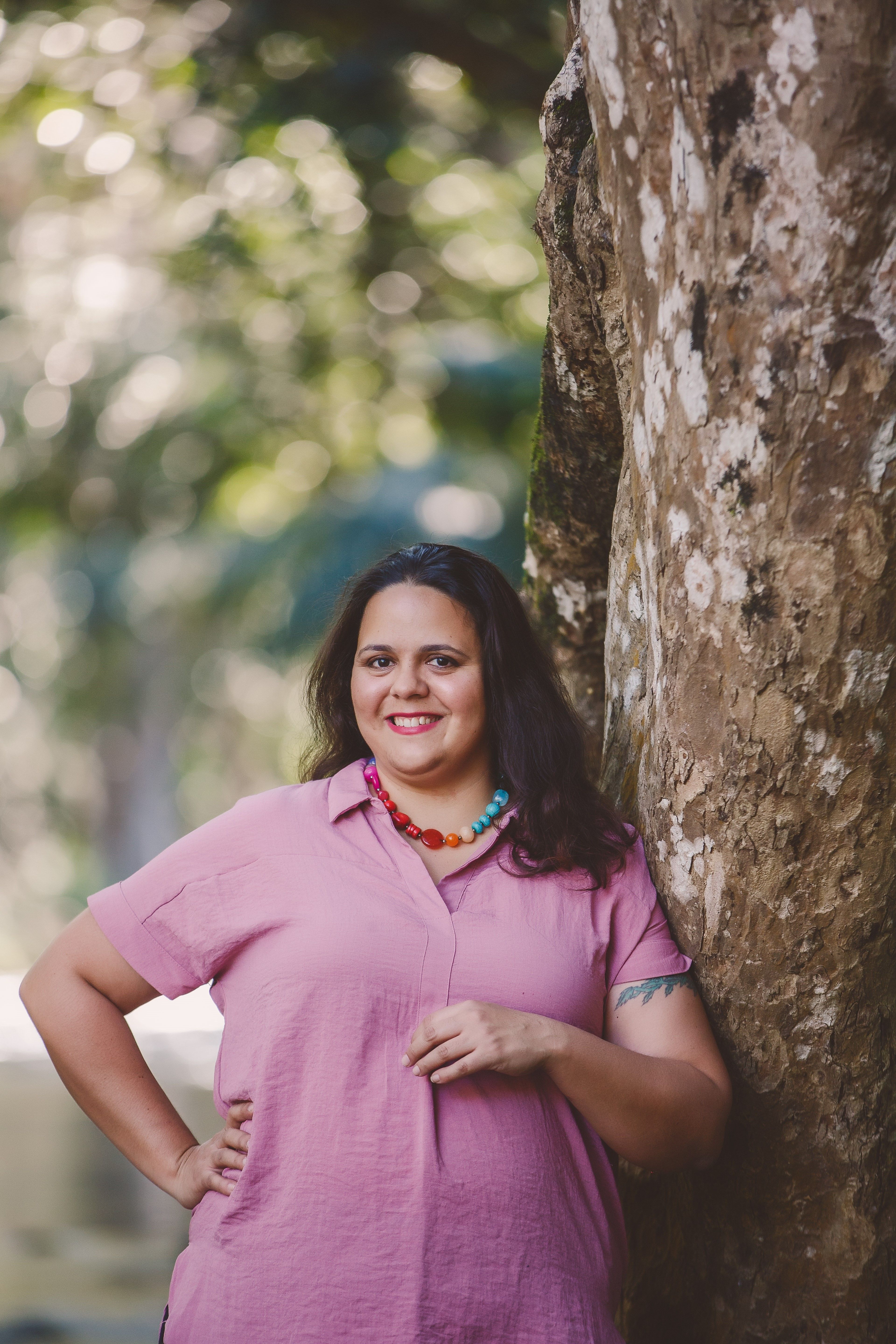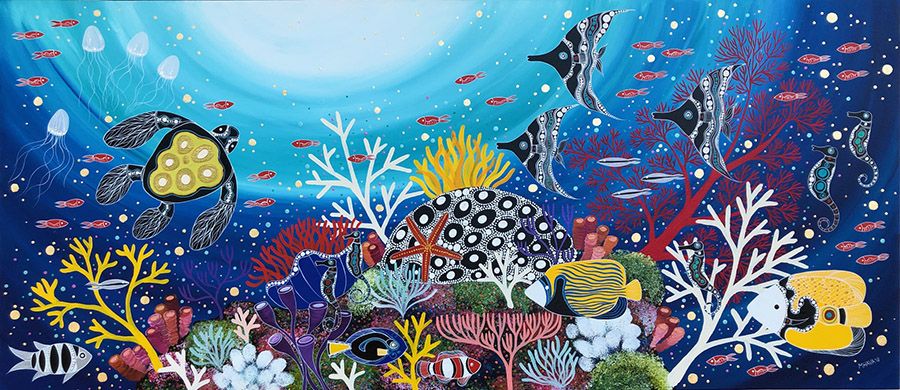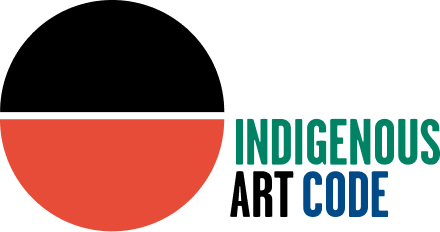Melanie Hava is a Mamu woman, from the Waribarra and Dugulbarra clans.
What does fair mean to you? Interview with artist Melanie Hava

She’s one of the most recognisable and diversified artists from Tropical North Queensland. Based in Gimuy/Cairns, Melanie remains close to her rainforest and reef homelands. She also has Austrian heritage and has created a unique style for her art—glittering depictions of rainforest and reef scenes—with European influences in her storytelling.
Melanie has been working as an artist since 2004 and since that time Melanie has become widely known. Her works are so sought after that, in more recent years, Melanie made her foray into merchandise pieces. Naturally, the images of her artworks are seen in more varied places and owned (in some sense) by tourists from across the world. The internet—emerging e-commerce and social media platforms, in particular—have proved to be a great asset to artists of any stage in their careers (especially for emerging artists) in reaching audiences and buyers. But these platforms are a double-edged sword, according to Melanie.
“In one way, social media is great for the artist. One doesn’t even need a gallery now for selling artworks! But on the other hand, social media is rampant with people copying other artists and businesses stealing images to use on products without the artist’s permission”, says Melanie.
Nonetheless, Melanie hasn’t been perturbed from creating, saying “I paint because I love it, and I share part of my soul and emotions in my art”.

While continuing to create artworks, bespoke for exhibitions—such as large-scale panoramic works—Melanie approaches her career as a practising and commercial artist carefully. In spite of having a definitive and masterful aesthetic language, Melanie says she sometimes feels the pressure of being influenced adversely by the sector.
“I’ve had galleries try to limit my scope of exposure and claim ownership of my work. [These are] galleries who would make more money than I would on my own work”.
However, Melanie says she has long-term and reliable support:
“Being a very non-confrontational and shy person, I had to reach for outside supports to help me out. Once I realised what some of [them] were doing and left them, my career opened up in greater ways.
I’ve been lucky to have worked with my business mentor, now, for over 10 years, as well as receiving advice from Arts Law. I feel I have the support I need! If I could go back in time, I would bring my experiences that I now have!”.
This support has seen Melanie through many instances of people reproducing her work for unofficial and commercial merchandise, and as prints of her artworks. Though, these experiences inspire Melanie to strive for a more just, balanced, and right sector.
_________________________
Indigenous Art Code asks Code Signatories (Code Signatories) to work fairly and transparently with artists, and the Indigenous Art Code of Conduct (the Code) sets out guidelines for Code Signatories to do this.
But from the artist’s perspective, what is fair?
Following conversations with Waanji, Teppathiggi and Tjungundji artist, writer, activist and deep thinker, Jack Wilkie-Jans, Indigenous Art Code commissioned him to write something about the concept of ‘fair’ from the artist’s perspective. In this series of interviews, Jack speaks with a diverse group of First Nations artists and cultural practitioners from across the country to better understand what fair means to them when they are creating art that is to be sold or licensed.

Jack Wilkie-Jans (Waanji, Teppathiggi and Tjungundji man of British, Vanuatuan and Danish heritage) is an established arts writer, artist, arts worker, and Aboriginal affairs advocate from Cape York Peninsula, based in Cairns/Gimuy, Queensland. After 12 years working across the contemporary Indigenous visual arts sector (at all levels of project management, domestically and internationally), in 2023 Jack launched his own consultancy practice: JWJ Consultancy. Professionally, Jack specialises in arts writing & review; policy guidance; governance and operational best Cultural practice; artist representation; regional economic development; and land management.
A Tribal Great-Grandson of Dr Thancoupie/Thanakupi Gloria Fletcher James AO, Jack is an Alumni of the National Gallery Leadership Program (2011). As an artist (painting, film and photography) his focus is on post-colonial narratives and non-Culturally specific artistic abstraction and exploration.

